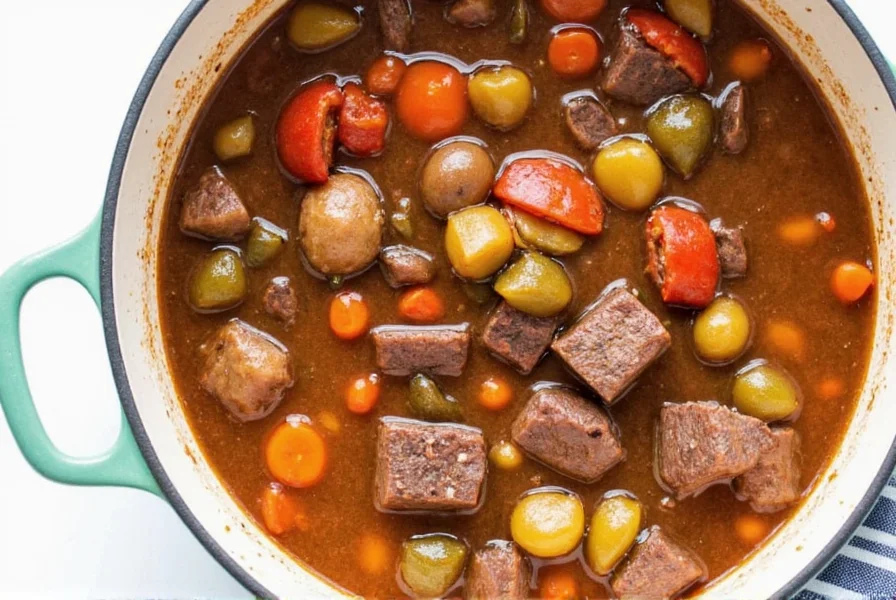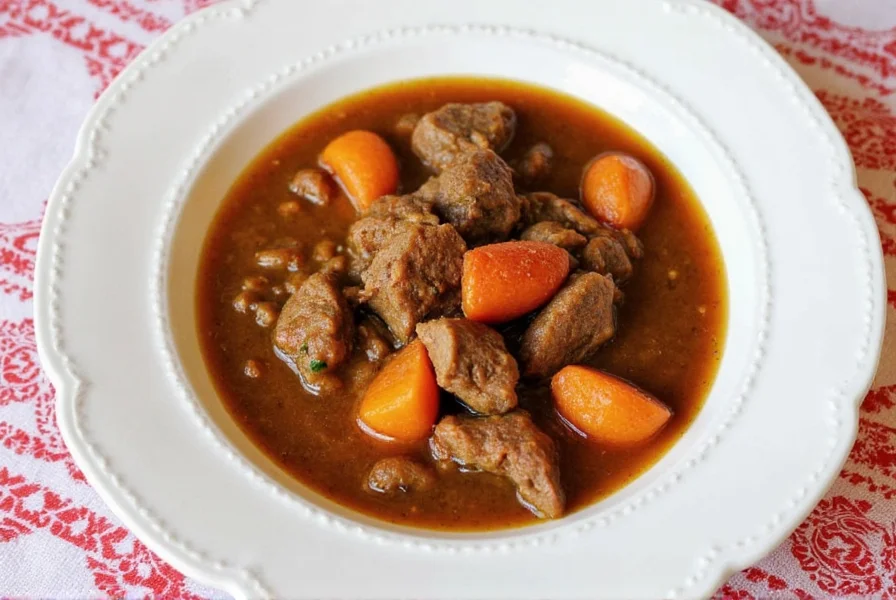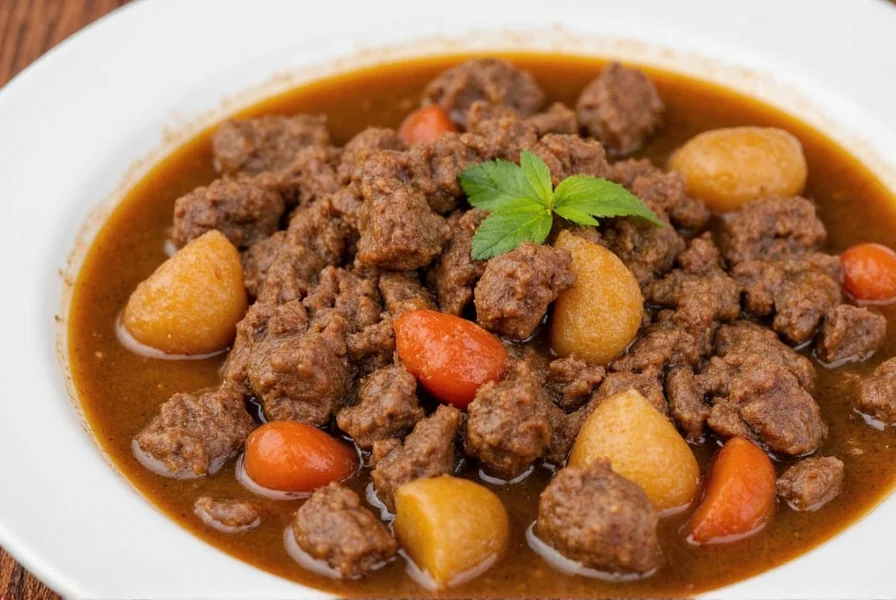This easy beef stew recipe is perfect for beginners. With tender beef, hearty vegetables, and the right seasonings, you'll create a comforting meal in under 2 hours. Here's how to make it:
Ingredients
- 2 lbs beef chuck, cut into 1-inch cubes
- 4 cups beef broth
- 2 carrots, sliced
- 2 potatoes, peeled and diced
- 1 large onion, chopped
- 3 cloves garlic, minced
- 2 tbsp tomato paste
- 1 bay leaf
- 1 tsp dried thyme
- 1 tsp paprika
- 1 tsp black pepper
- 1 tsp garlic powder
- 1/2 tsp allspice
- 2 tbsp olive oil
- Salt to taste
Instructions
- Brown the beef: Heat olive oil in a large pot over medium-high heat. Season beef cubes with salt and pepper, then brown in batches for 3-4 minutes per side. Remove and set aside.
- Sauté aromatics: In the same pot, add onions and garlic. Cook for 3 minutes until softened. Stir in tomato paste and cook for 1 minute to deepen flavor.
- Add liquids and seasonings: Return beef to the pot. Add beef broth, bay leaf, thyme, paprika, garlic powder, and allspice. Bring to a boil, then reduce heat to low.
- Simmer: Cover and simmer for 1.5 hours, stirring occasionally, until beef is tender.
- Add vegetables: Stir in carrots and potatoes. Cover and simmer for 30-40 minutes until vegetables are tender.
- Final adjustments: Remove bay leaf. Taste and adjust salt and pepper. Serve hot with crusty bread.
| Spice | Role in Stew | When to Add |
|---|---|---|
| Bay Leaf | Provides foundational savory depth | Start of cooking |
| Thyme | Adds earthy complexity | Start of cooking |
| Paprika | Enhances color and smoky sweetness | With liquids (mid-cooking) |
| Garlic Powder | Boosts savory richness without texture issues | With liquids |
| Allspice | Brings subtle warmth and sweetness | With liquids |
Tips for Success
- Browning is key: Don't skip browning the beef—it creates the Maillard reaction for deeper flavor.
- Low and slow: Simmer gently to keep beef tender; boiling makes it tough.
- Vegetable timing: Add potatoes and carrots later to prevent mushiness.

Frequently Asked Questions
What cut of beef is best for stew?
Beef chuck is ideal—it has the right balance of fat and connective tissue that breaks down during slow cooking, creating tender, flavorful meat. Avoid lean cuts like sirloin, which become tough.
Can I make this in a slow cooker?
Yes! Brown the beef and sauté aromatics first, then transfer everything to a slow cooker. Cook on low for 6-8 hours or high for 3-4 hours. Add carrots and potatoes in the last 2 hours.
How do I fix an over-salted stew?
Add peeled potato chunks to absorb excess salt (remove before serving), or dilute with more broth and vegetables. A splash of acid like red wine vinegar can also balance flavors.
Can I use fresh herbs instead of dried?
Yes, but use three times more fresh herbs. Add them in the last 30 minutes of cooking to preserve their delicate flavors. For example, 1 tsp dried thyme = 1 tbsp fresh thyme.
Storing and Reheating
- Refrigerate: Store in an airtight container for up to 4 days.
- Freeze: Freeze for up to 3 months. Thaw overnight in the fridge before reheating.
- Reheat: Warm gently on the stovetop over low heat, adding a splash of broth if needed.

Conclusion
This simple beef stew recipe delivers rich, comforting flavors with minimal effort. By browning the beef properly, simmering slowly, and adding vegetables at the right time, you'll create a dish that's perfect for any occasion. Don't forget to adjust seasonings at the end for the best results—happy cooking!











 浙公网安备
33010002000092号
浙公网安备
33010002000092号 浙B2-20120091-4
浙B2-20120091-4